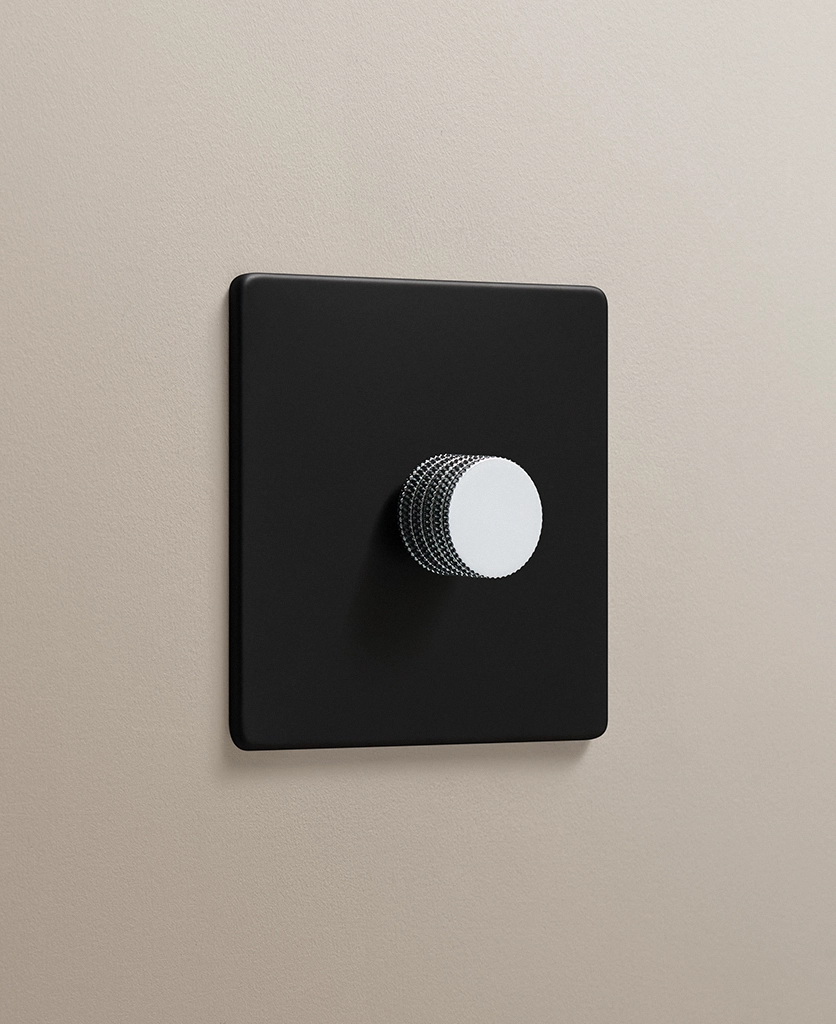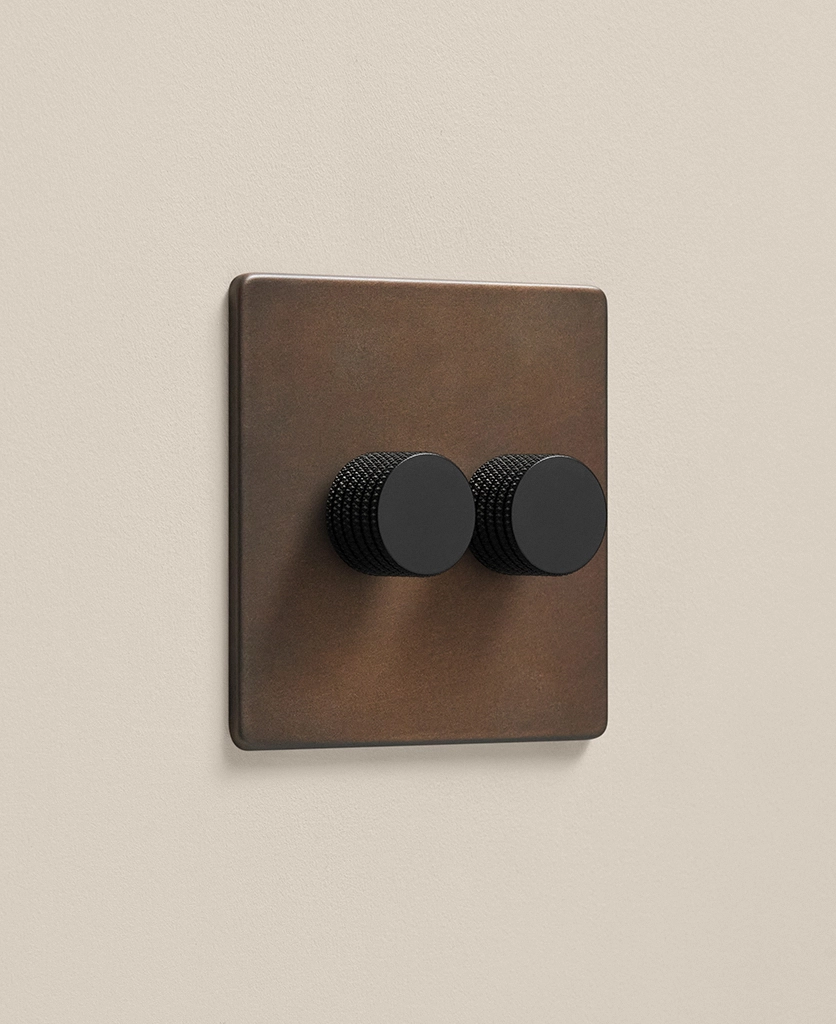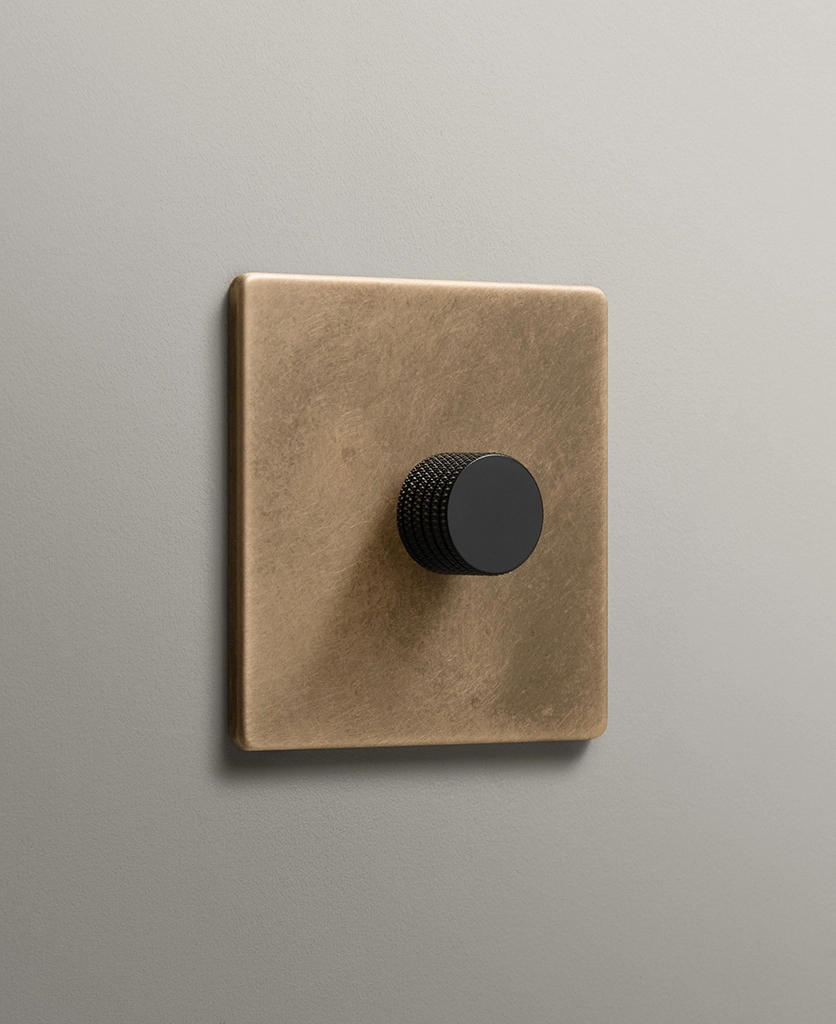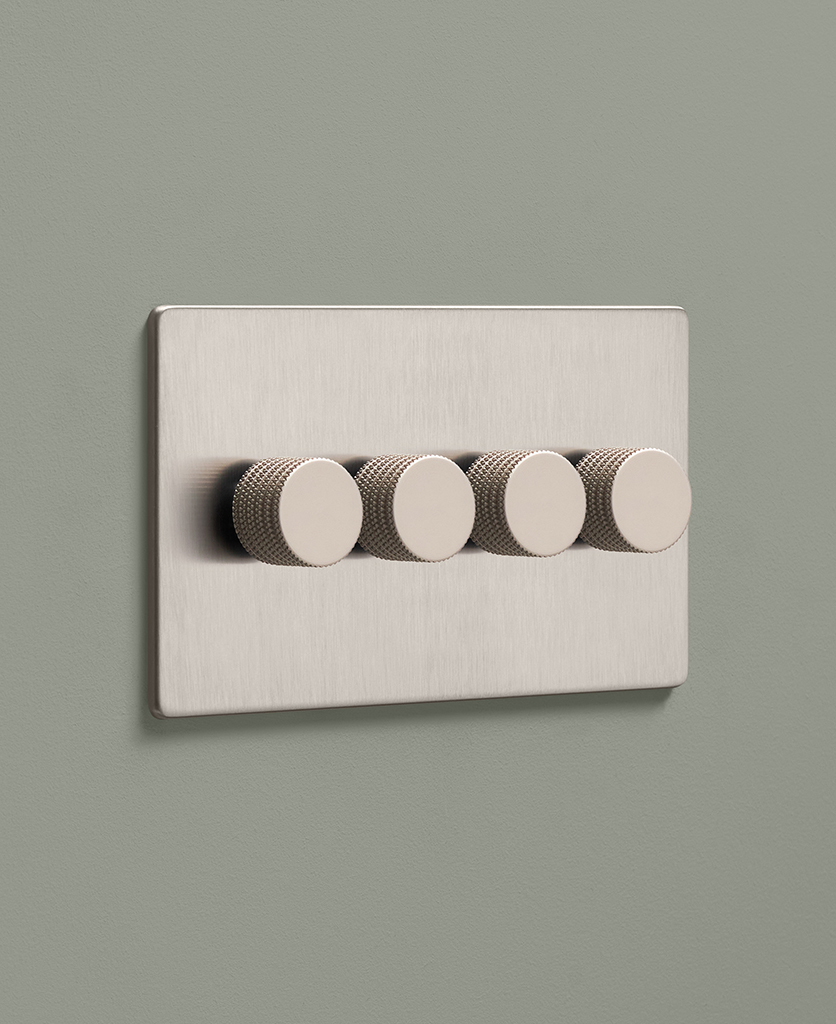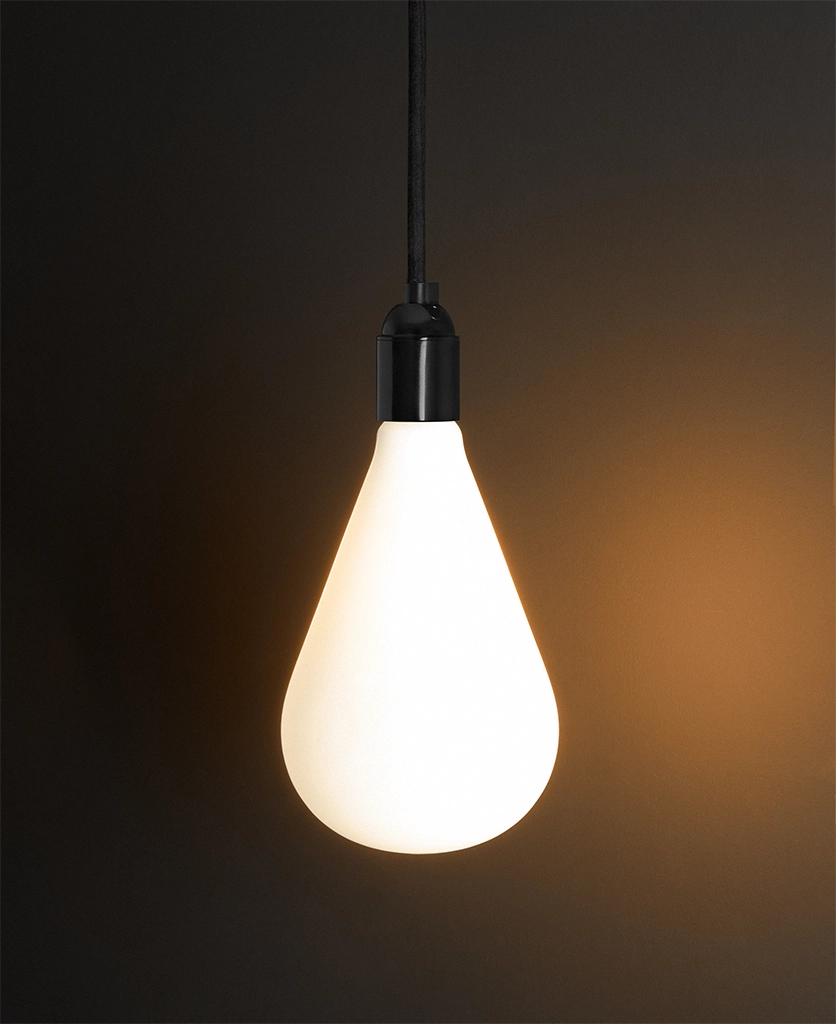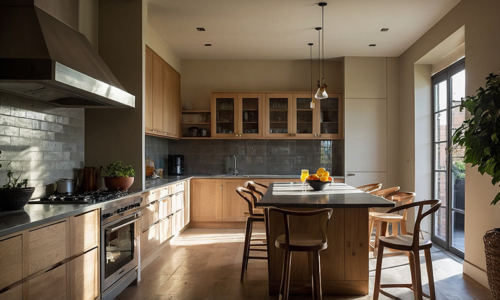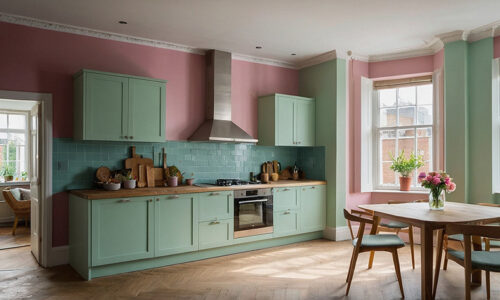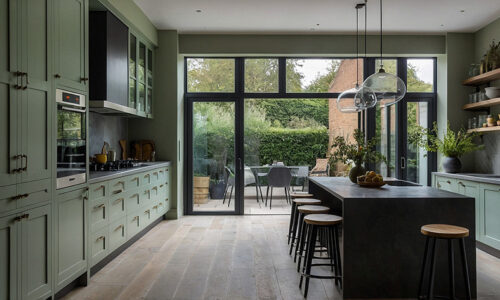What Is Ambient Lighting?
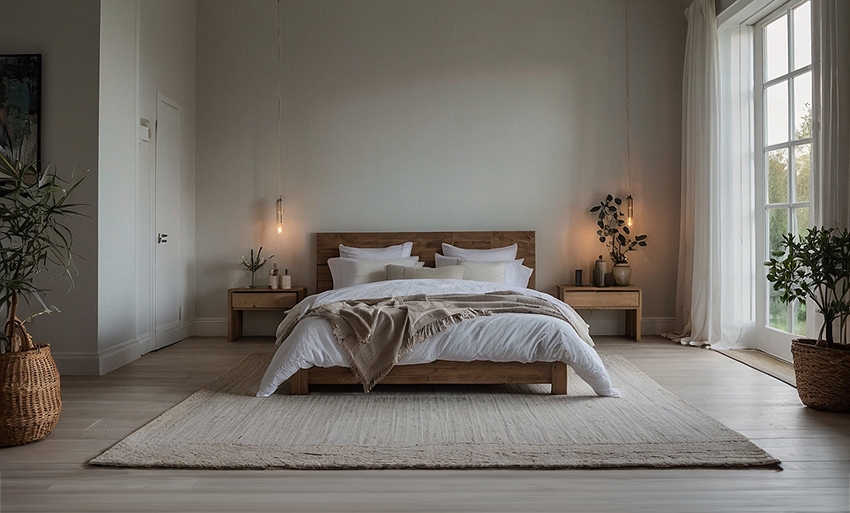
Arriving home after a long day, you enter the living room and flick the light switch to the ‘on’ position, admiring the cosy ambient glow provided by your overhead lights as it washes over the space. These lights give the perfect amount of illumination, reaching into even the darkest corners of the room for a beautiful, evenly-lit interior. And dimming the lights to help you unwind for the evening, you’re glad you took the time to invest in new light switches and sockets, too.
Ambient lighting is one of the most important things to get right in any home – but what exactly is it?
Discover what ambient lighting is and how to create the perfect home lighting scheme with expert guidance from Dowsing & Reynolds.
What is ambient lighting?
Ambient lighting serves as the primary source of illumination in a room, providing a comfortable level of brightness and ensuring the entire room is adequately lit. The goal is to ensure your ambient lighting lights the space evenly and keeps harsh shadows and glare to a minimum to create a balanced and inviting environment.
The key features of ambient lighting are:
- Soft and diffused illumination
- Even light distribution across the space
- A moderate level of brightness
- Creates a warm and inviting ambience
Where should ambient lighting be used?
Ambient lighting is a key part of any interior’s lighting scheme, but is especially important in rooms where you spend a lot of time and need to be able to set the right mood with ease.
- Living rooms: Use ceiling lights or floor lamps to create a cosy ambience for relaxing or socialising.
- Bedrooms: Use dimmable overhead bedroom lighting or bedside table lamps to establish a calming atmosphere that helps you wind down at the end of a long day.
- Hallways: Use wall lights or recessed lights to help you safely navigate the space, illuminate dark corners, and create a welcoming atmosphere.
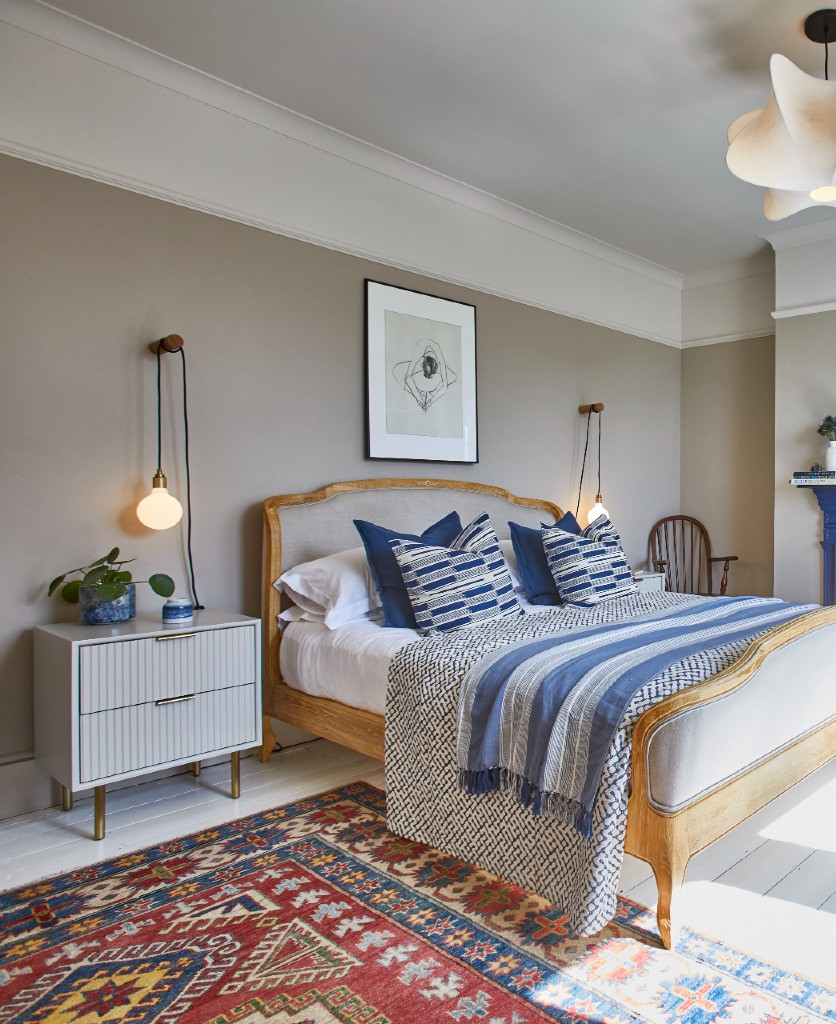
Image courtesy of @amazingtelly
5 tips for introducing more ambient lighting into your home
If you have rooms in your home that feel dark and uninviting even when the lights are switched on, it may be time to refresh your ambient lighting.
“If you want to introduce more ambient lighting into your home, start by layering. It’s not just about one big overhead light – think floor lamps, table lamps, even wall lights. Spread them around the room at different heights to create a soft, inviting glow. And don’t be afraid to use dimmers – they’re a game-changer for setting the right mood, whether you’re hosting friends or winding down with a book.”
Ally Dowsing-Reynolds, Interiors Expert and Co-Founder
There are plenty of easy ways to introduce more ambient lighting into your home to create cosy, welcoming, and beautifully lit interiors:
1. Use semi-flush lights to eliminate shadows
Semi-flush ceiling lights are a great choice for overhead ambient lighting as they disperse light more evenly around a room, rather than focusing light on a concentrated area like some ceiling lights do. The light from semi-flush fixtures is more likely to reach even the darkest corners of your space, eliminating any dark shadows to make your home feel more comfortable and inviting.
Semi-flush lights are especially great in large rooms where it can be difficult to achieve an even spread of light. Keep in mind that you will probably need a few evenly spaced ceiling lights throughout a large room to achieve the perfect, even level of illumination.
Tip: If you don’t have the time or budget to replace your overhead lights, placing floor lamps in dark corners is a great alternative for eliminating shadows and improving the overall ambience of your space.
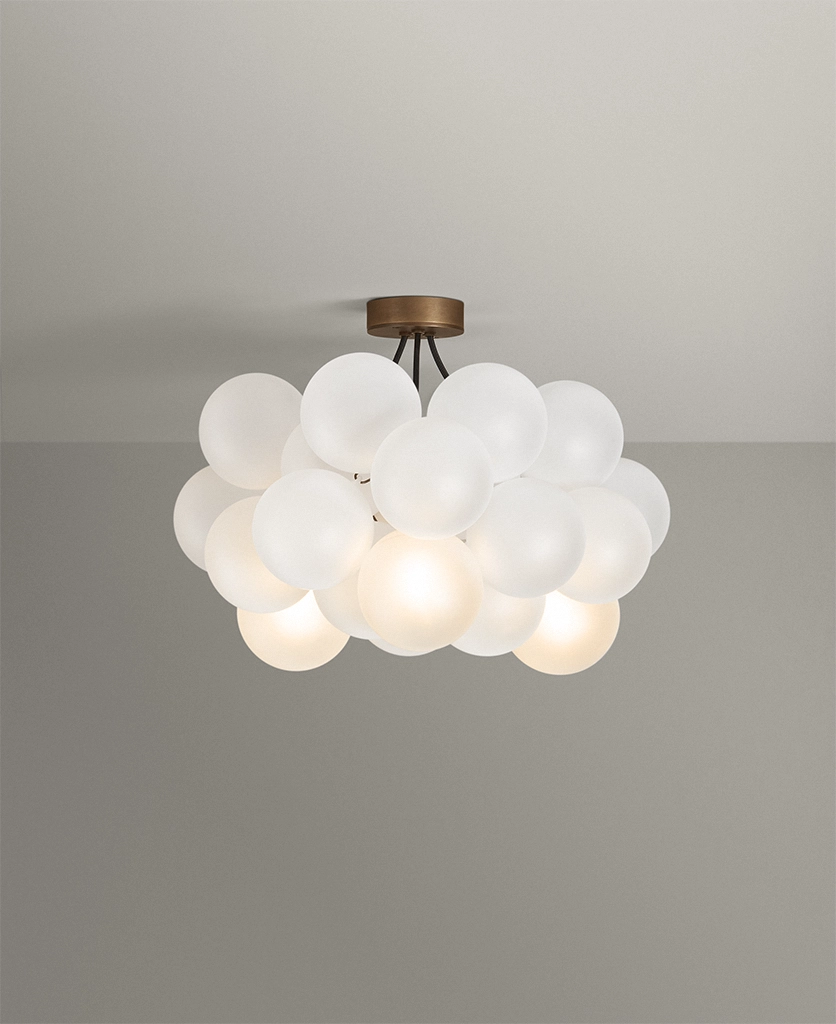
2. Put your lights on dimmer switches
One of the easiest ways to improve your home’s ambient lighting is to switch to dimmable lights. Dimmable lights give you much more control over the ambience of your space, enabling you to turn the brightness up when you need greater visibility and reduce the brightness when you want to create a more cosy atmosphere.
To make the switch to dimmable lights, you’ll need to install dimmer switches. Choose from a wide range of exclusive colours and finishes designed to complement your interior design.
3. Bounce light around the room with metallic finishes
Metallic finishes are great for reflecting light around a room, which can help to create a more uniform distribution of light. Consider opting for a large metallic chandelier to not only bounce light around the space but also create an eye-catching focal point.
Smaller details like light switches and door handles can also help distribute light more evenly and shouldn’t be overlooked – shiny chrome switches and sockets are a great example.
4. Opt for bulbs with a warm colour temperature
One of the main aims of ambient lighting is to create a cosy and inviting atmosphere, and the best way to do this is by choosing light bulbs with a warm colour temperature.
Warm bulbs have a colour temperature of 2700 Kelvins (K) or less and provide a cosy glow that helps us relax and unwind. Cooler bulbs (3000K+) are less suitable for ambient lighting fixtures because the light is more stark and clinical, intended to keep us alert rather than helping us switch off.
Switch out any harsh, overly bright bulbs in your home with warmer bulbs and notice how your space immediately becomes more relaxing.
5. Take advantage of natural light
If your space gets natural light from windows or skylights, always take advantage of this to enhance your home’s ambient lighting. Placing mirrors opposite your windows is a great way to bounce the light around the room and ensure light is evenly distributed even during the day when your lights aren’t switched on.
Light-coloured walls and glossy surfaces can also help to bounce natural light around the room for an evenly lit space.
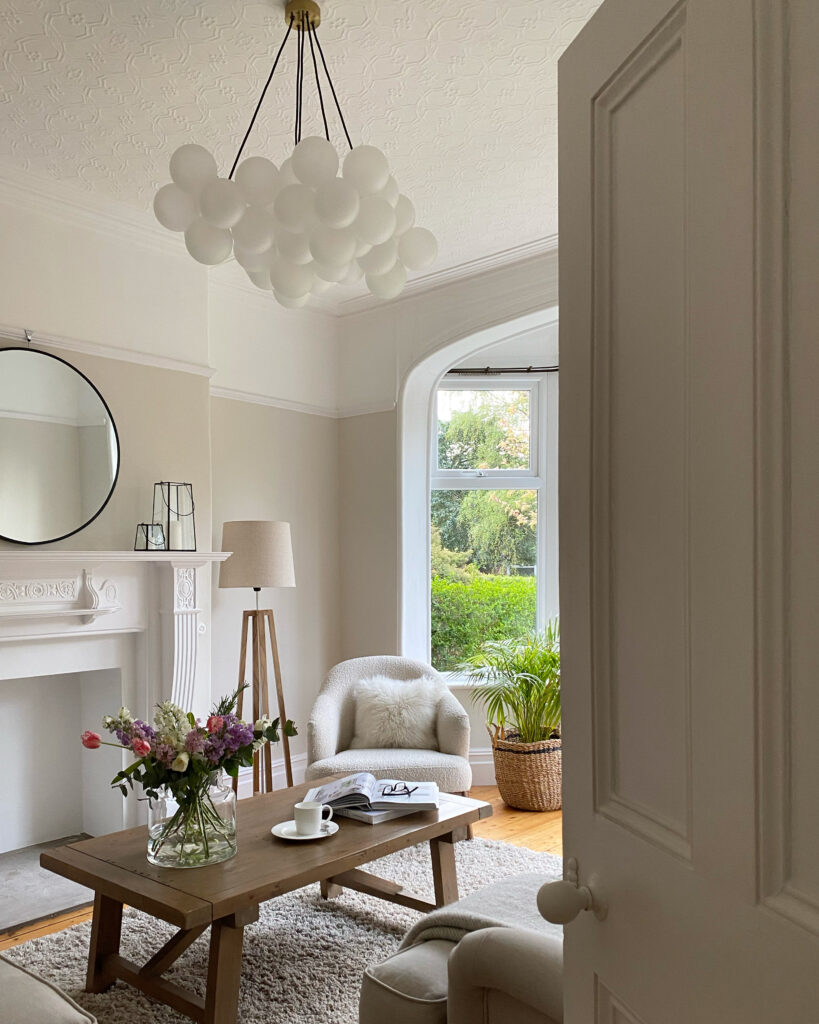
Image courtesy of @kath__cooke
Creating a layered lighting scheme
It’s important to remember that ambient lighting is just one element of your overall lighting design. In order to create a balanced, multifunctional lighting scheme, you need to make sure you include a combination of ambient, task, and accent lighting.
Task lighting is important because it helps to illuminate tasks, reducing eyestrain and helping us stay focused. You might hang bright pendant lights over your kitchen island to help with tasks like cooking and cleaning, for example.
Accent lighting highlights certain features or areas within a space and is essential for adding depth and interest. You might aim spotlights towards your favourite pieces of décor to draw attention towards them.
For more information, see our blog on how to create a layered lighting scheme.
Show us your ambient interiors
Now that you know what ambient lighting is, we’d love to see how you’ve used the tips from this blog to improve your home’s ambient lighting. Tag us on Instagram @dowsingandreynolds – we can’t wait to see what you’ve come up with!

